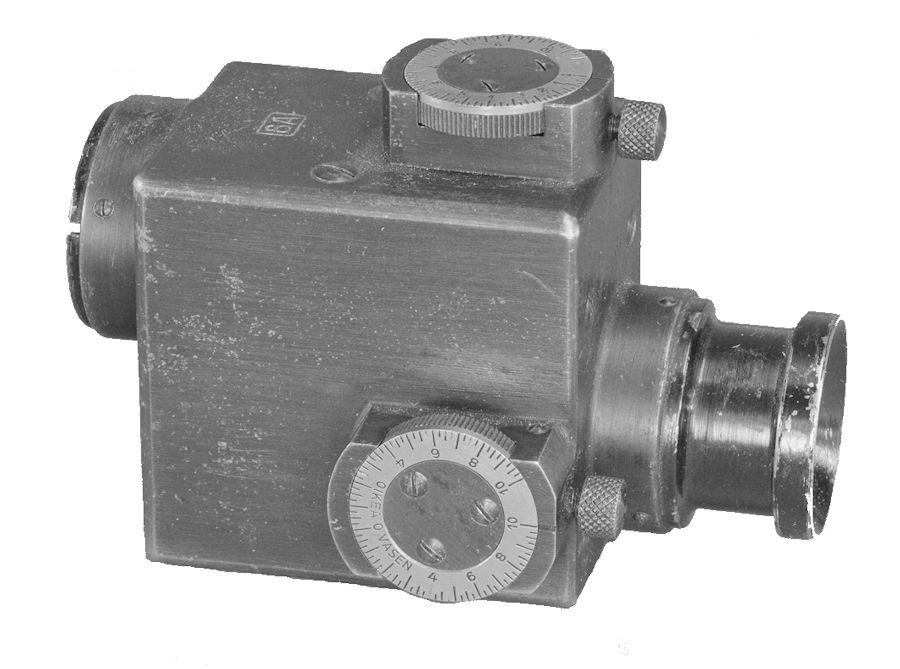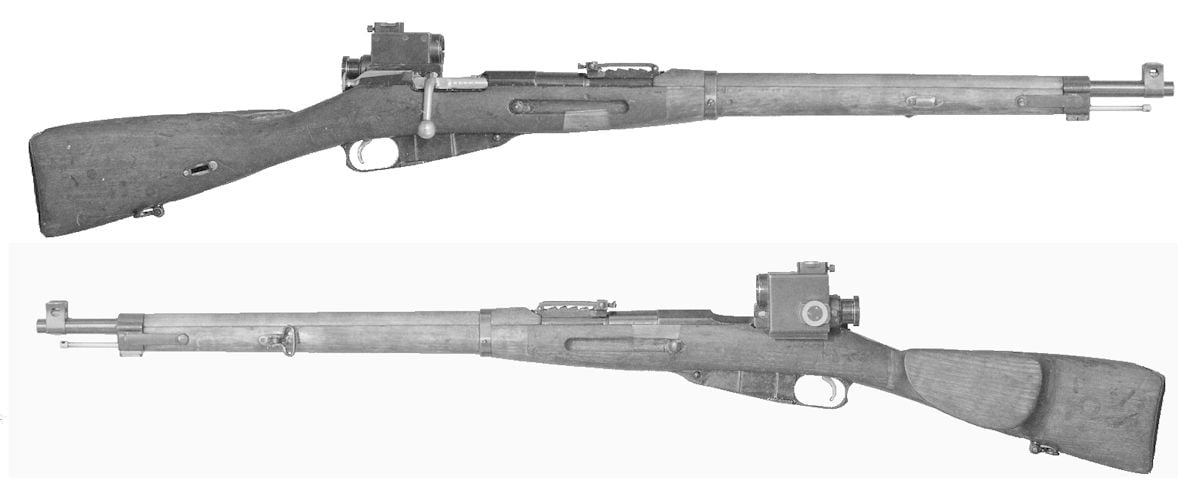Simo Häyhä is a legendary sniper, and his preference for using irons over the provided scope of his time is often cited to bolster anti-optic opinions. Coming across a website that had already put together an article, I wanted to look at the scope that would have been his alternative to iron sights to give some additional perspective to why he chose not to use it.

As noted the process of developing a sniper rifle for Finnish Army had stopped in year 1931. While the process had been stopped to wait for M/27 rifle to enter production, it still took several years after that until the sniper rifle project was re-introduced. Finnish Army restarted its testing of scoped rifles in year 1935, but somehow then ended up doing the development in totally backward way. Selecting existing rifle scope and purchasing it or even using existing scope and developing new scope from it would have made sense, but that is not how the project was done. Instead Finnish military decided that it wanted universal optical sight that could be used in several kinds of weapons (rifles, machineguns etc...) and gave only some instructions and the drawings of outer measurements to domestic optics manufacturer Oy Physica Ab, which designed the scope. While this made sense in some ways, it seems that common wisdom such as "form follows function" and "jack of all trades - master of none" had been completely forgotten in the matter.
The resulting 3x24 prismatic Physica-scope named after its manufacturer was just about as bad as it could get. The basic design was quite suitable to be used in machineguns, but horribly poor for sniper rifle. Physica-scope was box-shaped, weight about 800 grams, and designing a decent rifle mounting for installing it to M/27 rifle was a nightmare. Mounts setting Physica scope on top of the receiver were tested, but they set the scope so high that shooter had to raise his head unnaturally high, which pretty much ruined shooting stance and made getting proper cheek weld impossible. So the scope was installed off-set to to left side of the rifle. As the Physica scope had to installed to left side of the rifle the rifle butt needed be equipped with large cheek rest (it seems that all M/33 sniper rifles were not equipped with these). As if there would not have been problems enough Physica prismatic scope had also quite short (40 mm) eye relief, which easily resulted Physica scope of recoiling rifle hitting to brow of the shooter. Admitted attacking rifle scope on this manner did provide one minor benefit - since the scope was on left side of the receiver the rifle could be loaded with normal five round stripper clips. Also, unlike most period military rifle scopes, reticle used in Physica scope actually had etched markings for making quick range estimations and for making speed estimations for moving target. While somewhat crowded, the reticle could have been a success in some rifle scope of better design. Nevertheless the problems, once started, the project went ahead. By December of 1937 designing of both the scope and mount had been completed and Finnish Army Ordnance Department ordered 250 Physica scopes from Oy Physica Ab. From the 250 Physica scopes ordered 150 were intended as rifle scopes while 100 were reserved for Maxim M/32-33 machineguns (but later ended up also being used in M/39 PH sniper rifles). Production of scopes was slow to start and Leonard Lindelöf's machine factory proved equally slow in manufacturing scope mounts. Finnish snipers received only handful of these sniper rifles during Winter War. Most of M/27 infantry rifles selected to become M/27 PH sniper rifles had Tikkakoski-made rifle barrel with serial number over 80000. These sniper rifles were assembled by Finnish Army Weapons Depots. One could note that Physica scope may have been at least partly inspired by American Warner-Swasey prismatic sight, which US snipers had used during World War 1, although US military had found Warney-Swasey insatisfactory already back then.
When Winter War started in 30th of November 1939 only 84 of the ordered 250 Physica scopes had been manufactured and none had been yet installed to rifles. Production of scope mounts demanded extreme precision and was so slow that only few prototypes of new M/37 sniper rifle were made in time to be used in Winter War. Whole production run of 150 M/37 sniper rifles (infantry rifle M/27 with precision trigger mechanism and Physica scope) was completed by June of 1940. During Continuation War Physica scopes were often moved to new M/39 rifles. While originally referred as sniper rifle M/37, the older version Physica-scoped rifle rifle build on (infantry rifle M/27 was named as Sniper rifle M/27 PH during Continuation War. In addition of earlier listed problems the wartime use revealed that Physica rifle scopes and fogging issues and were more complicated to maintain than captured Soviet rifle scopes. Number of m/27 PH sniper rifles were decreasing fast already during the war and in year 1951 only 24 of them remained in inventory. The last of these rifles remained stored until 1970's.
